Dee Why sand dune shanty town: Police, Northern Beaches Council swarm on homeless site
A controversial, makeshift community neighbouring a popular Sydney beach and multimillion-dollar waterside homes has been swarmed on by council and police in a bid to dismantle it.
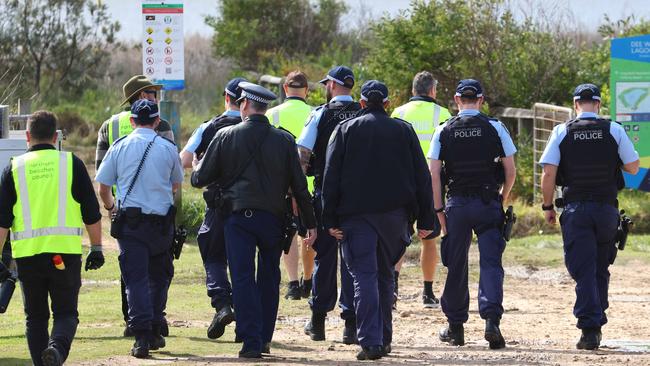
Manly
Don't miss out on the headlines from Manly. Followed categories will be added to My News.
Police, mental health workers and council staff swarmed over a controversial, makeshift camp on one of Sydney’s most prestigious beaches in an effort to “dismantle it”.
Northern Beaches Council workers moved to demolish the notorious shanty settlement on the sand dunes at Dee Why Beach on Thursday morning.
At 8am tipper trucks and several diggers gathered at the reserve behind Dee Why Beach - accompanied by police and community support workers from housing and emergency accommodation organisations.
Council officials began negotiations with several rough sleepers, urging them to leave the reserve.
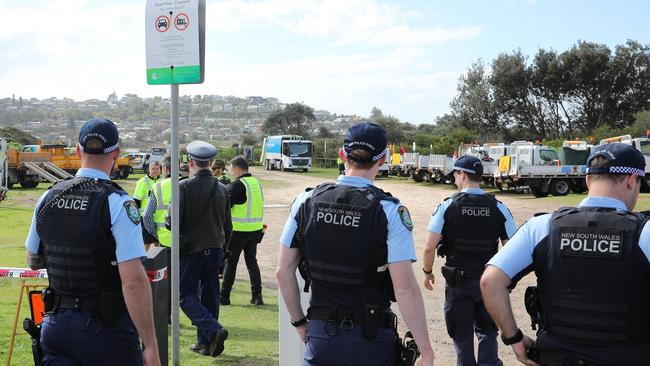
A number of people who were residing in the dunes agreed to leave and relocate.
It is understood that a number of them left of their own accord soon after authorities arrived at the reserve.
At 3.15, a man was seen leaving the reserve, escorted by council officers, after a series of negotiations throughout the day.
He was carrying a suitcase and a set of golf clubs. The man was picked up un a private car.
The reserve was opened back to public use at about 4pm.
The council confirmed that it removed 10 skip loads of waste items located in the Dee Why dunes. Some of the damaged areas in the dunes were cleared, fenced and are prepared for regeneration.
The makeshift campsite had become the focus of community concerns amid reports of locals being assaulted and nearby homes being broken into.
The council also had concerns about the safety of the squatters and people using the reserve due to the amount of debris and rubbish around the campsites.
Community support workers hd been talking with a number of squatters in an effort to encourage them to take up offers of alternative housing.
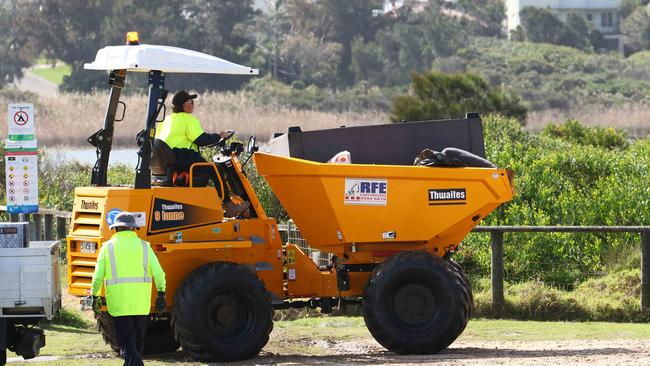
Work to remove the tents, tarpaulins, and cooking equipment did not start until the squatters had left their individual campsites.
Deputy mayor, David Walton, was at the site on Thursday morning to observe the joint operation between the council police and community organisations.
Cr Walton said The decision to remove the campsites was the result of concerns raised by Dee Why residents and people who use the lagoon reserve for recreation.
“There have been reports of rocks, being thrown at walkers, allegations of verbal abuse by inhabitants of the unlawful campsites.
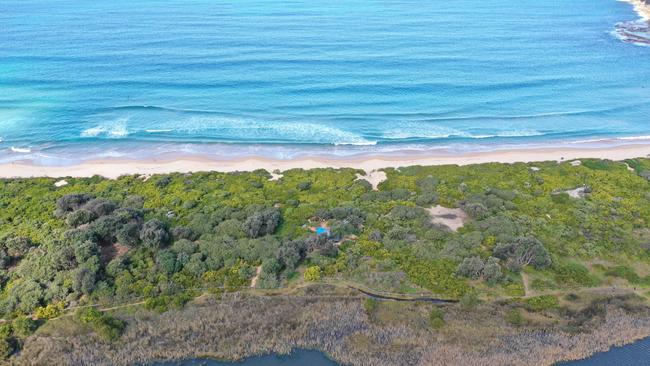
“There have been allegations of malicious wounding’s, people being stabbed in the reserve. We know of at least two incidents police are now dealing with.
“The community has called on the council to take action, and we are taking action today,“ Cr Walton said.
A Dee Why resident, Who regularly uses the walking path by the lagoon, said she had never been bothered by the campsite squatters.
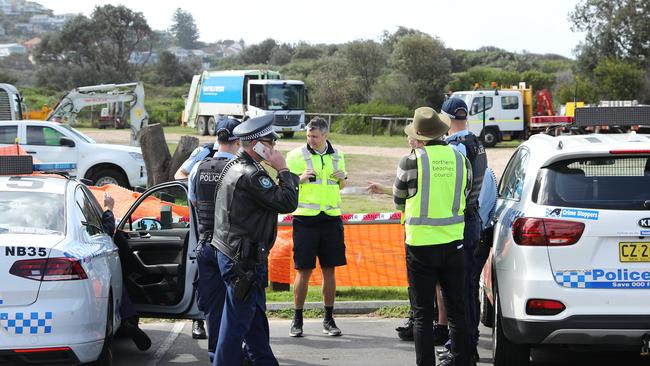
“I’ve seen people leaving site in the morning with shopping trolley, but I’ve never actually seen any tents or anything like that.
“But I have heard that people have complained about being broken into, and they thought it was those living in the reserve.”
The council said it was “again (offering) support to the people who have established a campsite located in the sand dunes between Dee Why Lagoon and the beach”.
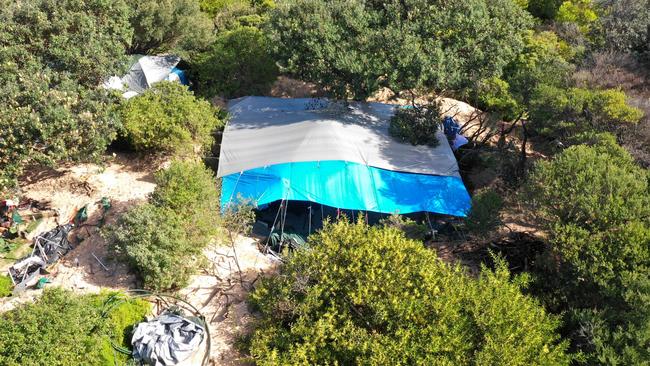
This will also involve the removal of the growing accumulation of items that has been amassed there in the interest of community safety.
The cuncil, supported by homelessness and welfare agencies, Mission Australia, and Bridge Housing, is providing ongoing support and more offers of housing to the people in the camp.
Councillors, this month, approved a plan to work with “homelessness support agencies to provide a resolution to the issue of safety at Dee Why Beach and the adjacent sand dune area”.
Mayor Sue Heins said council was taking action following an “escalation of behaviours that have created a safety risk to the community”.
“’We know homelessness is a complex issue and we will continue to work with relevant homeless support agencies to provide ongoing assistance to those involved,” she said.
“We are guided by a Homeless Persons Protocol which seeks to balance the rights of all members of the community, including the homeless, to use public spaces.
“Above all else, we recognise the need for a compassionate approach to supporting the people involved.
The items removed from camp will be stored at safe Council facility and the residents will be helped to access it at a time suitable to them.



